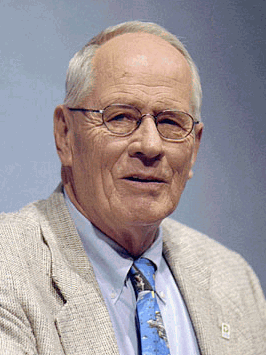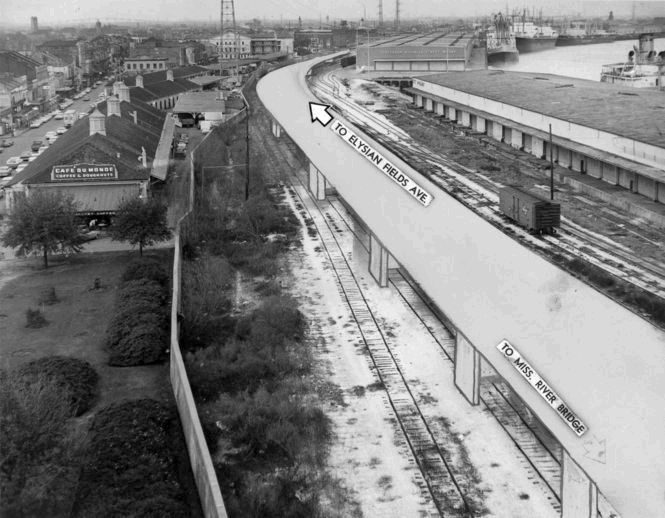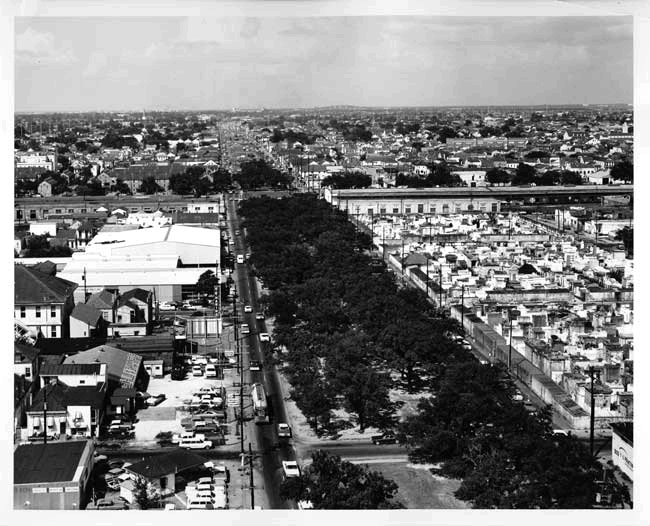|
Today in New Orleans History |
|
|
October 13

 To receive an update for each day in New Orleans history,
join our facebook page - Today in New
Orleans History.
Stephen Ambrose Dies Historian and biographer of U.S.
Presidents Dwight D. Eisenhower and Richard Nixon, Stephen Edward Ambrose was a longtime
professor of history at the University
of New Orleans and the author of many best selling volumes of American popular history. He
founded the Eisenhower Center at the University of New Orleans in 1989, serving as its director until 1994. The
Center's first efforts, which Ambrose initiated, involved the collection of oral histories from World War II veterans about
their experiences, particularly any participation in D-Day. By the time of publication of Ambrose's D-Day, June 6, 1944: The Climactic Battle of World War II, in 1994, the Center had collected more than 1,200 oral histories. Ambrose donated $150,000 to the Center
in 1998 to foster additional efforts to collect oral histories from World War II veterans Ambrose's work for the Eisenhower Center, specifically his work with D-Day veterans, inspired him to found the National
D-Day Museum in New Orleans. Ambrose initiated fundraising by donating $500,000. He secured large contributions from
the federal government, state of Louisiana, Tom Hanks, Steven Spielberg, and many smaller donations from former students,
who answered a plea made by Ambrose in the New Orleans Times-Picayune. A longtime smoker, Ambrose was diagnosed with lung cancer in April 2002. His health deteriorated rapidly, and seven months after the diagnosis he died,
at the age of 66. In 2003, Congress designated the museum as "America's National World War II Museum," acknowledging an expanded scope and mission
for the museum. "The Stephen E. Ambrose Memorial Fund continues to support the development of the museum's Center for
Study of the American Spirit, its educational programs and oral history and publication initiatives." The Ambrose Professor of History was established at the University of New Orleans after his death. The position is
reserved for a military historian. (Wiki)  To receive an update for each day in New Orleans
history, join our facebook page
- Today in New Orleans History
In December 2005 the Tulane University board of directors announced that the university would be
reorganized on July 1, 2006, to accommodate needed changes due to losses following Hurricane Katrina. The board also approved
the recommendation of a special Tulane Renewal task force to name a revised, co-educational, single undergraduate college
-- Newcomb-Tulane College. The new college within the university is not strictly a successor to Newcomb College. Arguing the
"renewal" plan violated the donor's original intention of the gift, Newcomb's heirs filed and lost two suits against
the university to invoke the restrictions of Newcomb's lifetime gifts and bequest in her will. The university stated that
by naming Tulane her universal legatee in her will, Josephine Louise Newcomb placed no conditions on the use of her donations,
but entrusted her gifts to the discretion of the Administrators of Tulane University. In 2008 Susan Henderson Montgomery,
a great niece of Josephine Louise Newcomb and the plaintiff claiming to be her successor, after losing in New Orleans civil
district court, appealed to the state. On October 13, 2010, a state appeals court sided 3-2 with Tulane
University. On February 18, 2011, the Louisiana Supreme Court voted, 4 to 2, with one abstention, to let a lower court's
ruling in favor of Tulane stand.
The Riverfront Expressway
The Times-Picayune graphic of the proposed Riverfront Expressway, Feb. 15, 1965. The
Louisiana Highway Department (predecessor to the Louisiana Department of Transportation and Development) hired Robert Moses
as a consultant in 1946 to examine New Orleans' traffic and propose solutions. His proposals included a 40-foot high, 108-foot
wide freeway running south 3.5 miles from I-10 exit 237 near Elysian Fields Ave, following Elysian Fields at ground level
to the riverfront, and continuing southwest, elevated to the US 90 Mississippi Bridge approach. There it would turn southwest
and run to a point near Lafayette Street, where ramps would connect to the Greater New Orleans Bridge (U.S. Highway 90 Business).
An extension, never part of the Interstate Highway System, was to continue west to meet the Earhart Expressway (Louisiana
Highway 3139).It was not added to the Interstate Highway System as an urban route in the 1950s due to a lack of funding,
but by 1961 it was being considered for addition. One proposal to gain the mileage was to shift Interstate 10 to the Riverfront
route, but eventually, in 1964, the Interstate 420 bypass of Monroe was removed from the Interstate System and the mileage
transferred to the Riverfront Expressway project. It was officially added to the Interstate Highway System on October
13, 1964, as Interstate 310. From 1964 to 1969, it remained designated as Interstate 310. Known
as the Vieux Carré Riverfront Expressway, the plan was ill-received by New Orleanians who fought to prevent its construction
through the French Quarter. The voice of the people was heard and the elevated expressway was never built. The
freeway was removed from the Interstate System on August 22, 1969. Its mileage was used in part for a new southern bypass
of New Orleans—Interstate 410—which was itself never completed However, one component of the original
plan, a six-lane tunnel, 690 feet long by 98 feet wide, under the Rivergate Convention Center (now Harrah's New Orleans Casino)
was built and is presently used for valet parking. While the French Quarter was spared from the intrusion of the interstate highway, Treme was not. The width
of Claiborne Avenue provided the second most convenient route for its construction. The
opposition of the largely African-American residents of Treme did not overcome the alternate route of an elevated expressway
there. The lush oak trees (pictured here in August 1966 were destroyed to make way for the highway and the neighborhood
was changed forever. (See also October 12).
The New Orleans Greys were organized in New Orleans on October 13, 1835, at the Coffee
house and Arcade of Thomas Banks. Adolphus Sterne, a Nacogdoches businessman, favored the Texas Revolution and with approval
from the Texas provisional government, financed the operation. The Greys were a Military volunteer unit of two militia companies that totaling about 120 men that had formed for service in the Texas
War of Independence. Their name came from the grey military fatigues they wore.
|
|
|

To receive an update for each day in New Orleans history,
join our facebook page - Today in New
Orleans History.
Analytics |




